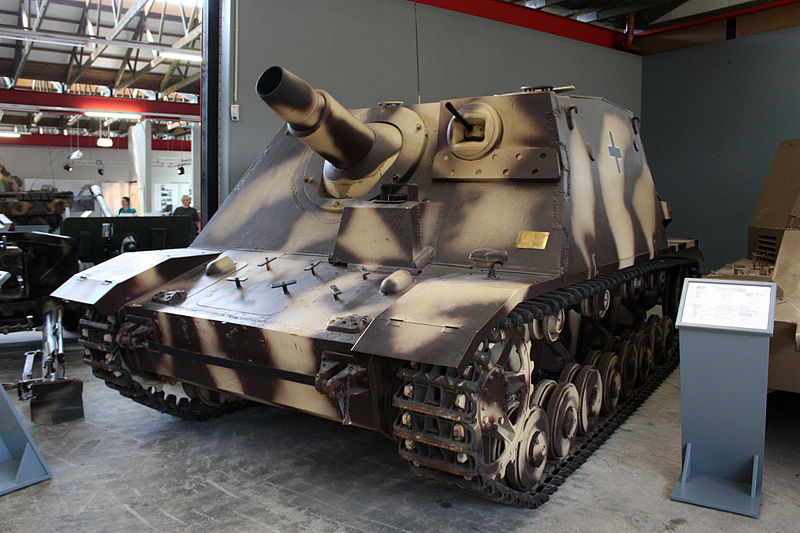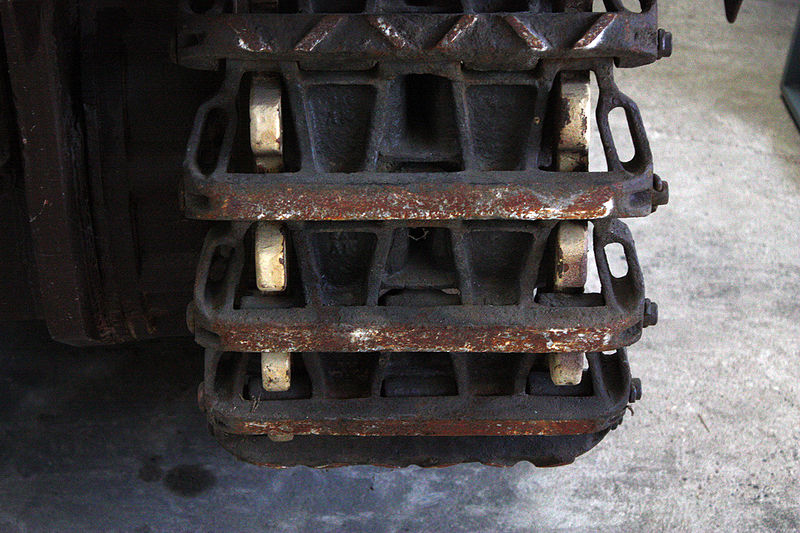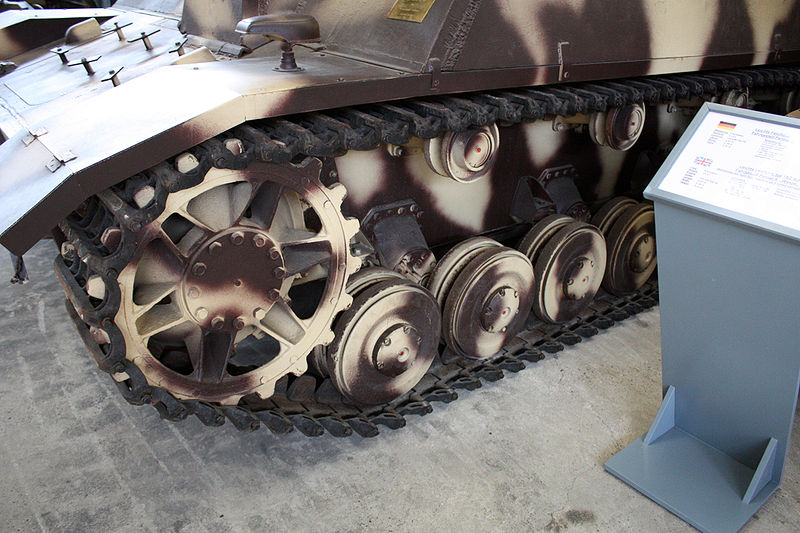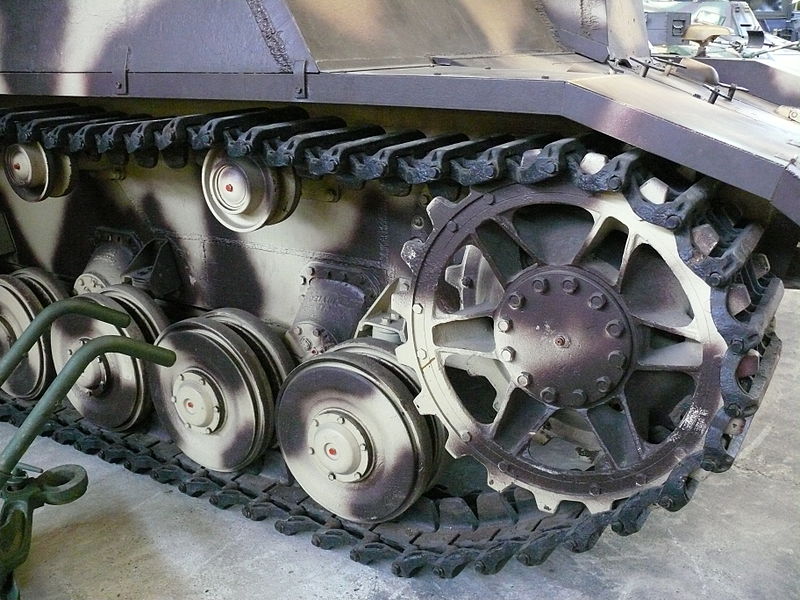Development of the Sd.Kfz.166
In 1942, Albert Speer placed an order for a howitzer mounted on a tank chassis to keep up with the Panzer Divisions. Alkett received the order to design the new vehicle, which would be known as the Sd.Kfz.166, Sturmpanzer, or Sturmpanzer 43. Although commonly referred to as the Brummbär, this was the nickname given to the Sturmpanzer 43 by Allied intelligence, not by the Germans. They referred to it casually as the Stupa 43.
Design
The chassis was the one of the reliable, mass-produced Panzer IV. Above it, Alkett fitted a massive 15 cm (5.9 in) Sturmhaubitze (StuH) 43 L/12 developed by Škoda, which had common ammunition with the standard siG 33 howitzer in German service. 38 rounds with their separate propellant cartridges were carried, stored in the casemate and the hull. However, these massive rounds had a combined weight of 46 kg (38 kg/84 lb for the High Explosive shell itself and 8 kg/18 lb for its propellant cartridge), which made manual loading especially arduous on some elevations. The gunner set up the trajectory and aimed the gun using a Sfl.Zf. 1a sight.
The howitzer was protected by a casemate with sloped sides and thick armor plates. Indeed, this thickness was 100 mm (3.93 in) at a 40° angle on the front, 40 mm/12° (1.57 in) for the front hull, 50 mm/15° (1.97 in) for the side superstructure, 30 mm (1.18 in) for the side of the hull and 30 mm /25°/0° (1.18 in) for the rear of the casemate and 20 mm /10° (0.79 in) for the back of the hull. The top and bottom were protected by 10 mm (0.39 in) of armor at 90°. Outside the main howitzer, a single MG 34 machine gun could be fastened to the open gunner’s hatch, in the same way as for the Sturmgeschütz III Ausf.G. In addition, early vehicles carried a MP 40 sub-machine gun intended to be fired through the two firing ports on each side of the superstructure.
The driver was located forward, slightly in front of the casemate, and was given the Tiger I Fahrersehklappe 80 sight. Ventilation of the casemate’s fumes and heat was provided by natural convection, exiting through two armored covers at the back of the roof. By the time these vehicles were ready, spaced armor became the norm and Schürzen plates were factory-fitted. The first production vehicles proved their superstructure was way too heavy for the chassis, and experienced breakdowns of suspension elements or the transmission. The second series corrected this issue with a newly shaped, lighter casemate. The decision was taken in October 1943 and after the redesign, 800 kg (1,800 lb) of steel were spared, including from the gun mount itself on the third series. This new series was named StuH 43/1. Also, the Zimmerit anti-magnetic coating was factory-applied until September 1944.
Production & variants
Sources conflict as to how many were built, either 306 or 313. There were four series built as follows, all using variants of the Panzer IV chassis.
– Series 1: April 1943 60 built by Vienna Arsenal, with 52 using Panzer IV Ausf.G and 8 using rebuilt Ausf.E chassis.
– Series 2: December 1943-March 1944 60 built at the Vienna Arsenal using Ausf.J chassis.
– Series 3: March-June 1944 Built at Vienna Arsenal.
– Series 4: June 1944-March 1945 Built at the Deutsche Eisenwerke on Ausf.J chassis.
Because of the weight of the gun, there were problems with the suspension of the Brummbär. With Series 4 a new, lighter gun eased the problem considerably; in addition, a MG 34 was mounted for close defense. Previous models had a MG 34 mounted on the commander’s cupola.
The only variant of the Brummbär was a command vehicle, Befehlsturmpanzer IV. It had extra radio capacity. Krupp also built one prototype of a proposed Jagdpanzer IV with a 8.8 cm Pak 43 L/71.
The Sturmpanzer IV in action
The Brummbär primarily saw service in 4 battalions, Sturmpanzer-Abteilungen 216, 217, 218, and 219.
Sturmpanzer-Abteilung 216 first saw action at Kursk, when it formed the 4th battalion of Panzerjaeger 656, where it got as far as Ponyri. Afterwards, it withdrew to defensive positions to repel the Soviet offensive around Orel. As an independent battalion, it next saw service at Anzio in Italy, and from then to the end of the war it withdrew north until the battalion was forced to destroy its remaining vehicles and surrender in the Po valley.
Sturmpanzer-Abteilung 218, raised in August 1944, fought against the Warsaw Uprising, then remained on the Eastern Front until destroyed in East Prussia, in April 1945.
Sturmpanzer-Abteilung 219 fought against the Soviets in the Budapest area. At least two companies of Brummbär-equipped units are known: Sturmpanzer -Kompanie z.d.V. 218 took part in crushing the Warsaw uprising, then incorporated into the Sturmpanzer Abteilungen noted above. Sturmpanzer-kompanie Z.B.V. 2.-/218 was transferred to the Paris area on August 20th 1944, nothing more is known of this unit.
During the battle of Normandy in the summer of 1944, short barrelled 15 cm Sturmpanzer IV ‘Brumbärs’ (Sd.Kfz. 166) were deployed to assist in street fighting in the villages and deal with enemy units in fortified locations. They were part of the 217.Sturmpanzer-Abteilung (assault tank battalion). It was formed of three companies of fourteen Sturmpanzer IVs and three additional vehicles used by the command company.
On 24 June 1944 it was ordered to move from Grafenwöhr in Germany to Normandy. On 18 July 1944 the battalion reported that it had reached the area of Condé-sur-Noireau/Le Bény-Bocage and Vire in Normandy. Not all of the Sturmpanzer IVs had completed the journey. Some had suffered mechanical problems.
On 23 July 1944 the 2nd Company was attached to the 21.Panzer-Division. It reported it had eleven working vehicles with two being repaired. On 29 July 1944 it was transferred to the II.SS-Panzer-Division LAH and the next day reported that it now only had nine working vehicles with two in repair.
The 3rd Company had been attached to the II.SS-Panzer Korps. On 30 July 1944, the 3rd Company was transferred to the LXXIV Korps.
On 6 August 1944, Thirteen Sturmpanzer IVs from the 217.Sturmpanzer-Abteilung were reported to be supporting the 89.Infantry-Division. Things changed because on 9 August 1944 ten of these Sturmpanzer IVs were in action with the SS-Panzer-Divison Hitlerjugend on only one was left with the 89.Infanterie-Division.
Some wrecked Sturmpanzer IVs locations were noted following Operation Totalize 8/9th August around the Normandy village of Cintheaux on the Caen-Falaise main road. One was found 1.5 km north west of Cintheaux in the field south east of the junction of the D23 with the road, now track, called La Maisonnette by the cross roads. Two were found near each about 750 m south west of Cintheaux along a track that runs south west from the town limits sign on the D183. A fourth was reported in a field to the west of the D167 about 1 km south south west of Cintheaux.
On 10 August 1944, only five of the ten vehicles were reported in a working condition. The situation was the same the next day. On 11 August 1944 the 1st Company, 217.Sturmpanzer-Abteilung was reported attached to the 271.Infanterie-Division.
On 16 August 1944 the 217.Sturmpanzer-Abteilung reported that between 1 to 15 August 1944 the battalion had lost ten men killed, twelve were missing and thirty-five were wounded. Only seventeen Sturmpanzer IVs were combat ready. Fourteen were under repair and predicted to be ready in less than three weeks.
The Battalion’s remaining Sturmpanzer IVs continued to see action supporting the SS-Panzer-Divison Hitlerjugend and the 89.Infanterie-Division. Both units fought on the same front in Normandy.
Those that escaped the Falase pocket were reformed and saw action during the battle of the bulge, Ardennes offensive. It reached St. Vith, but got no further. The unit was finally captured in the Rhur pocket in April 1945.
Sources
Objective Falaise by Georges Bernage
Sturmpanzer-abteilung 216 by Attilios on Panzer-central, World War II German Army Research, Historyofwar.org, Achtung Panzer
The Sd.Kfz.166 Brummbär on Wikipedia
Sturmpanzer IV article
Specifications |
|
| Dimensions (L-W-H) | 5.9 m x 2.8 m x 2.52 m (19ft 5in x 9ft 5in x 8ft 3in) |
| Total weight, battle ready | 28.2 tons (62,170 lbs) |
| Armament | 15 cm (5.9 in) StuH 43 L/12 (Series 1), StuH 43/1 L/12 (series 2-4) (38 rounds) 7.92 mm Machinengewehr 34 (external machine gun) |
| Armor | 10 mm to 100 mm (0.39 – 3.93 in) |
| Crew | 4-5 (commander, driver, gunner, 2 loaders) |
| Propulsion | Maybach HL120TRM V-12 watercooled, gasoline, 300 bhp (221 kW) |
| Speed | 40 km/h (25 mph) road, 24 km/h (15 mph) off-road |
| Suspension | Leaf springs |
| Range | 210 km (130 miles) |
| Total production | Approx. 316 |
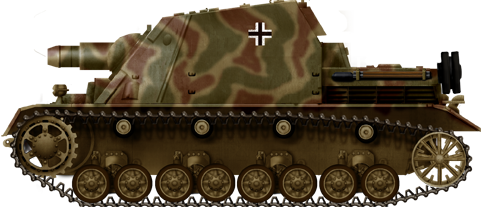
Early Brummbär from the Sturmpanzer Abteilung 217, Caen area, Normandy, France, July 1944.
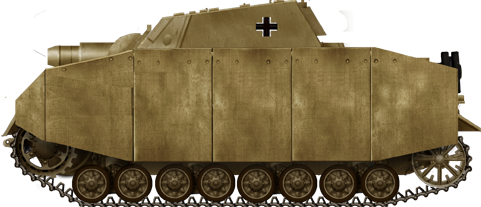
Early Sd.Kfz.166 from the St.Pz.Abt.218 in Warsaw, August 1944.
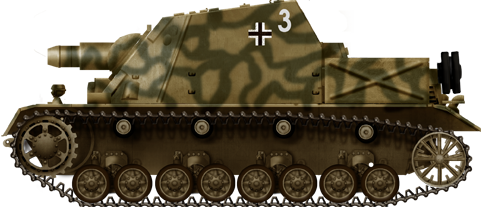
Sturmpanzer Abteilung 216, Italy, fall 1944.
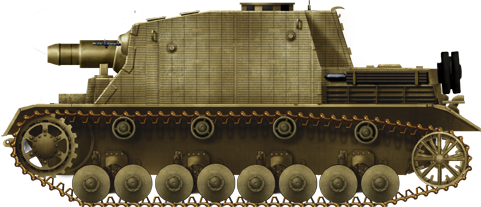
Late production Sd.Kfz.166 Brummbär with Zimmerit paste and metallic rim roadwheels, now preserved at the Saumur Museum.
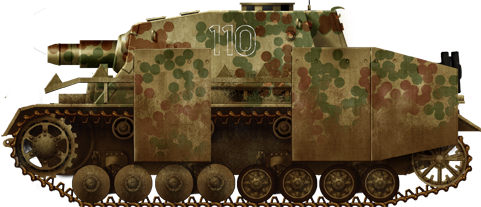
Late production Brummbär with the “ambush” type camouflage, Eastern Germany, 1945.
Gallery
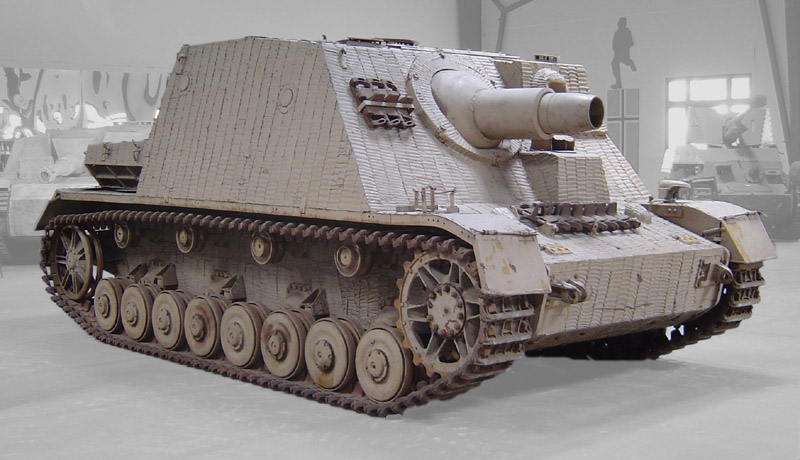
Late type Brummbär at the Saumur tank museum, covered with Zimmerit.
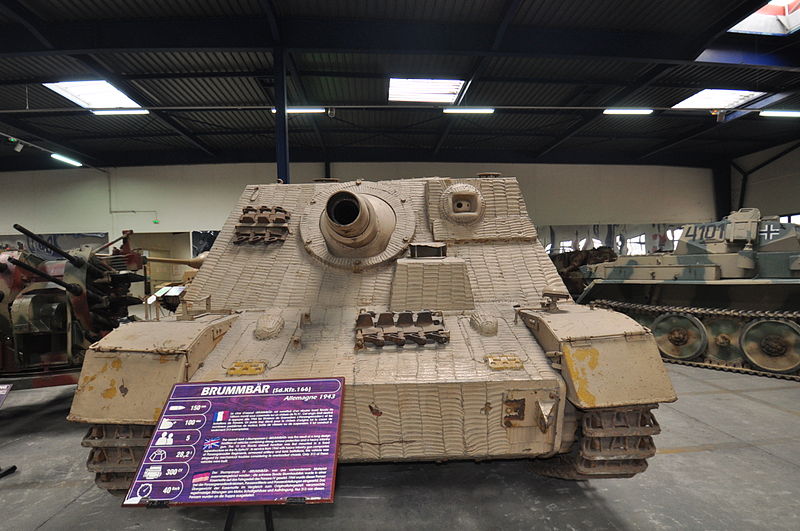
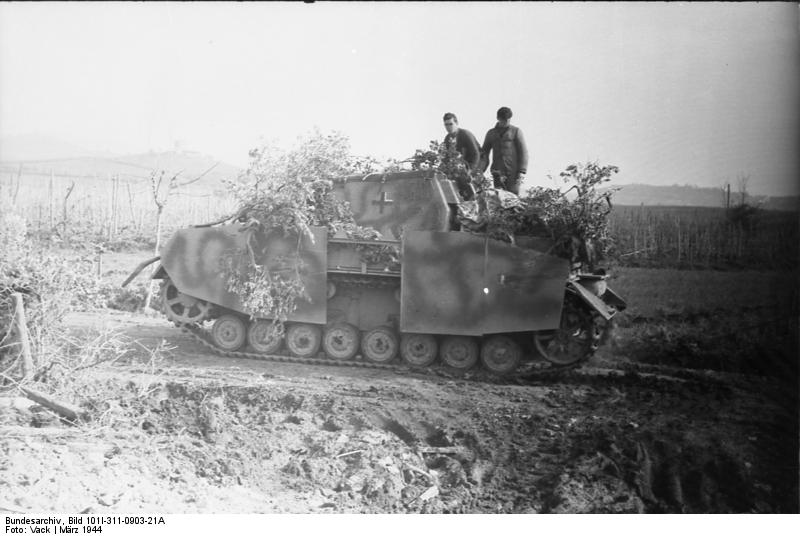
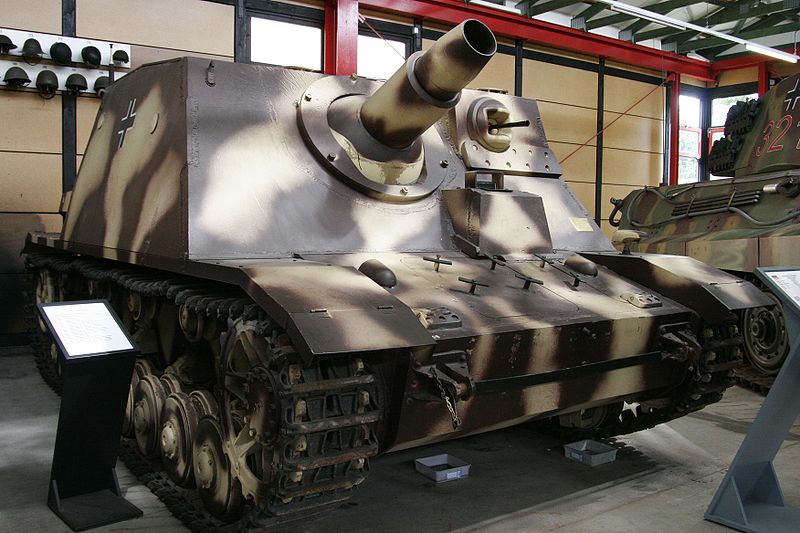
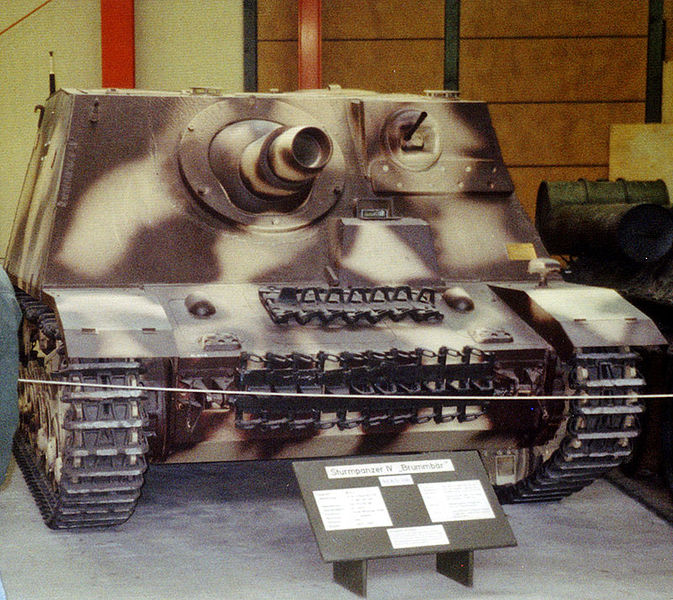
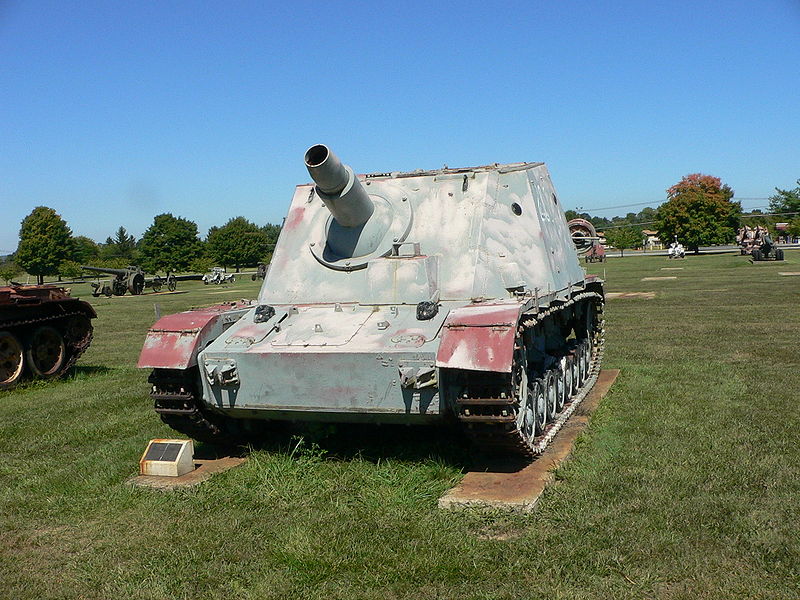
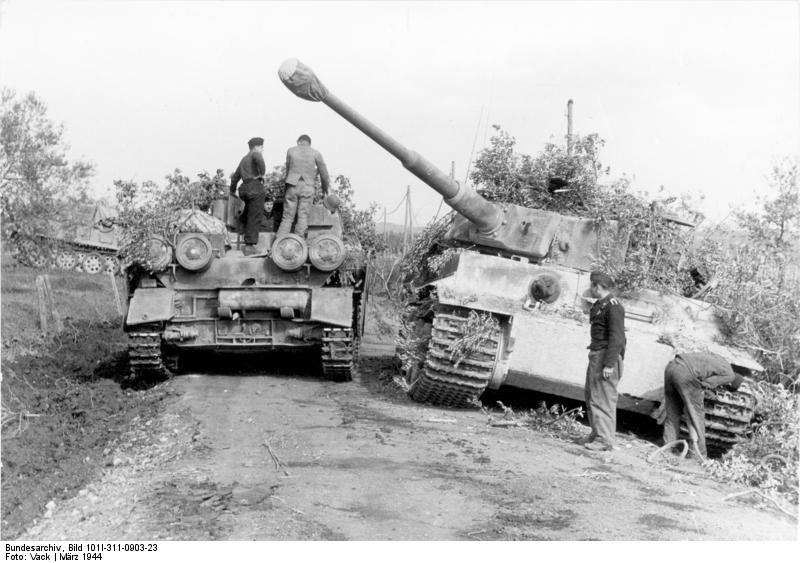
Video about the Brummbär

WW2 Tanks




























WW2 tanks posters

All Tiger tanks liveries.

Panther liveries and variants

WW2 Armour - All tanks











Tanks aces and single tanks series

Find more there

Museums, Movies, Books & Games
The Tanks and Armor in pop culture
Tanks and armored vehicles in general are only really grasped when seen first person: The mass, the scale, it's all there. Explore also the way tanks were covered in the movie industry, in books and in video games.Movies:
Best tanks movie on warhistoryonline.com
On imdb.com
On bestsimilar.com/
miltours.com
liveabout.com/
watchmojo.com
Video Games:
pcgamesn.com
historyhit.com
levvvel.com
vg247.com/best-tank-games
mmobomb.com/
alienwarearena.com


